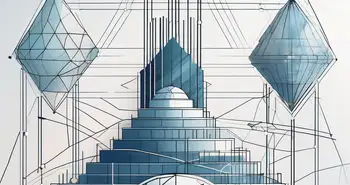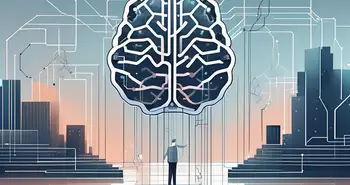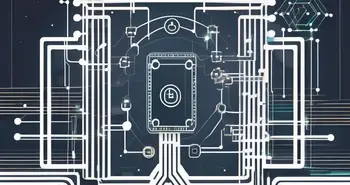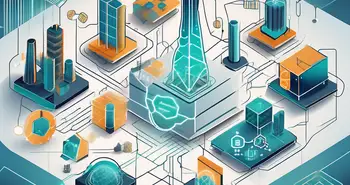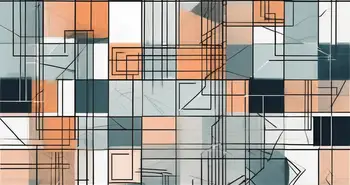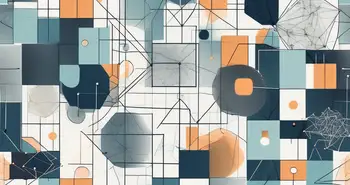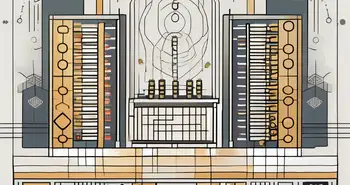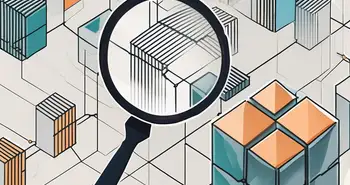The Impact of Blockchain on the Internet of Things
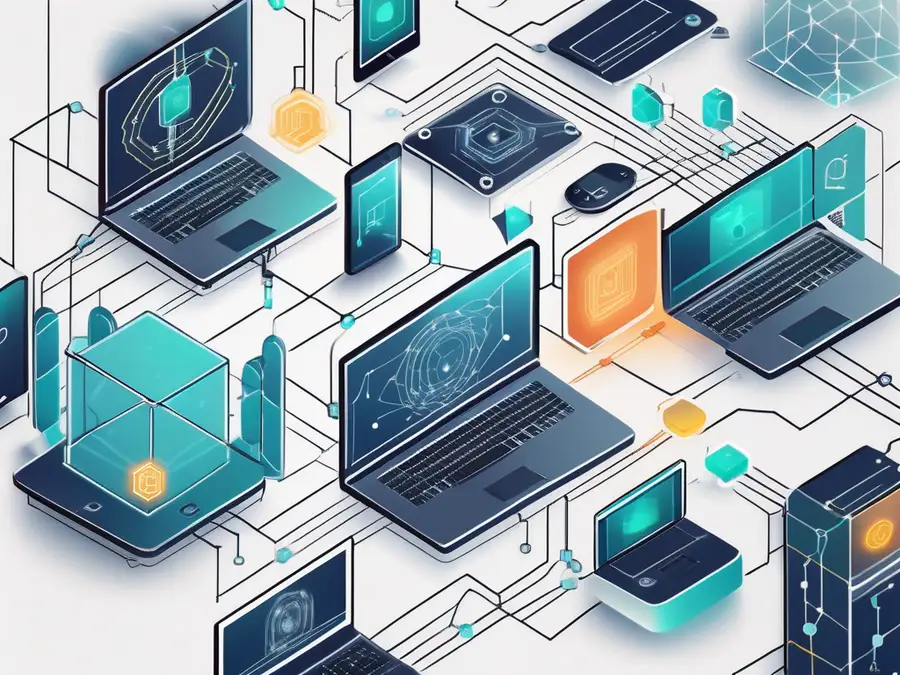
As an expert in the field of technology and its applications, I am excited to delve into the fascinating topic of the impact of blockchain on the Internet of Things (IoT). Blockchain technology has gained immense popularity in recent years, and its potential to revolutionize various industries is undeniable. When combined with the capabilities of the IoT, the possibilities become even more extraordinary. In this article, we will explore the basics of blockchain, the Internet of Things, and the intersection of these two powerful technologies. So, let's dive in and uncover the immense impact that blockchain can have on the IoT.
Understanding Blockchain Technology
Before we can explore the impact of blockchain on the IoT, it is essential to have a clear understanding of the basics of blockchain technology. At its core, blockchain is a decentralized and transparent digital ledger that records transactions across multiple computers. Each transaction, or “block,” is linked to the previous one, forming a chain of blocks. This structure ensures the integrity and security of the data stored on the blockchain.
Blockchain offers several key features that make it highly suitable for various applications, including immutability, transparency, and security. These features are achieved through a combination of cryptography, consensus mechanisms, and decentralized networks. By eliminating the need for central authorities and providing a tamper-proof system, blockchain technology has the potential to transform industries across the board.
The Basics of Blockchain
At its core, blockchain is a decentralized and transparent digital ledger that records transactions across multiple computers. Each transaction, or “block,” is linked to the previous one, forming a chain of blocks. This structure ensures the integrity and security of the data stored on the blockchain.
How Blockchain Works
Blockchain operates through a network of computers, known as nodes, that participate in the verification and validation of transactions. When a new transaction occurs, it is broadcasted to the entire network. The participating nodes then work together to validate the transaction and add it to the blockchain. This validation process involves complex cryptographic algorithms that ensure the integrity and authenticity of the transaction.
Moreover, blockchain relies on a consensus mechanism to ensure that all nodes agree on the state of the blockchain. This consensus mechanism can vary, with popular options including Proof of Work (PoW) and Proof of Stake (PoS). Regardless of the consensus mechanism employed, the goal is to establish trust and prevent malicious actors from manipulating the data stored on the blockchain.
The Internet of Things Explained
Now that we have a solid understanding of blockchain technology, let's turn our attention to the Internet of Things. The IoT refers to the network of interconnected devices that can communicate and share data with each other. These devices can range from everyday household objects, such as smart thermostats and refrigerators, to industrial machinery and sensors.
Defining the Internet of Things
The IoT is a vast network of connected devices that collect and exchange data, enabling them to interact and make informed decisions without human intervention. This interconnectedness allows for increased efficiency, improved productivity, and enhanced convenience in various aspects of our lives.
The Role of IoT in Today's World
As the world becomes more connected, the IoT has become an integral part of our daily lives, both on a personal and industrial level. From smart homes that allow us to control our appliances with a simple voice command, to smart cities that optimize energy consumption, the IoT has the potential to transform how we interact with the world around us.
The Intersection of Blockchain and IoT
Now that we have a solid understanding of both blockchain and the IoT, let's explore the intersection of these two technologies and the potential impact they can have when combined.
The Potential of Blockchain in IoT
Blockchain technology can address some of the key challenges faced by the IoT, such as security, privacy, and trust. By leveraging the properties of blockchain, the IoT can benefit from an immutable and transparent ledger, ensuring the integrity of data and transactions. Additionally, blockchain can provide a decentralized and tamper-proof system that prevents unauthorized access and manipulation of IoT devices.
Challenges at the Intersection of Blockchain and IoT
While the combination of blockchain and the IoT holds immense potential, it also presents several challenges. One significant challenge is scalability, as the IoT generates a vast amount of data, which needs to be processed and stored on the blockchain. Moreover, the consensus mechanisms employed in blockchain technology can be resource-intensive, making it difficult to implement them on resource-constrained IoT devices. Addressing these challenges will be critical to fully unlock the potential of blockchain in the IoT.
Blockchain Solutions for IoT
Despite the challenges, several blockchain solutions are being developed to enhance the security and efficiency of the IoT ecosystem.
Enhancing Security with Blockchain
One of the most significant advantages of using blockchain technology in the IoT is enhanced security. By leveraging blockchain's tamper-proof nature and smart contract capabilities, IoT devices can securely authenticate and communicate with each other. Additionally, blockchain can provide a decentralized identity management system, eliminating the need for central authorities and reducing the risk of data breaches.
Improving Efficiency through Blockchain
Blockchain technology can also improve the efficiency of IoT systems. By eliminating intermediaries and establishing trust through consensus mechanisms, blockchain enables direct peer-to-peer transactions between IoT devices. This streamlined approach can eliminate bottlenecks and reduce costs, making IoT systems more efficient and cost-effective.
The Future of Blockchain and IoT
As we look ahead to the future, it is evident that the combination of blockchain and the IoT has the potential to transform various industries and reshape how we interact with technology.
Predicted Trends for Blockchain and IoT
Industry experts predict that the adoption of blockchain in the IoT will continue to grow, leading to increased security, improved data integrity, and enhanced trust among IoT devices. We can expect to see more use cases and applications that leverage the powerful synergy between blockchain and the IoT.
The Long-term Impact of Blockchain on IoT
With its ability to address the fundamental challenges faced by the IoT, blockchain technology is poised to have a long-lasting impact on the IoT ecosystem. As blockchain solutions mature and scalability challenges are overcome, we can expect to see a more secure, efficient, and interconnected IoT landscape.
As an expert in this field, I have witnessed firsthand the transformative potential of blockchain in the IoT. The convergence of these two technologies opens up exciting possibilities for innovation and disruption. By embracing blockchain technology and leveraging its unique properties, we can create a more secure and efficient IoT ecosystem that benefits both individuals and businesses alike.
Frequently Asked Questions
What is blockchain technology?
Blockchain technology is a decentralized and transparent digital ledger that records transactions across multiple computers. Each transaction, or “block,” is linked to the previous one, forming a chain of blocks. Blockchain offers several key features, including immutability, transparency, and security.
What is the Internet of Things (IoT)?
The Internet of Things refers to the network of interconnected devices that can communicate and share data with each other. These devices can range from everyday household objects to industrial machinery and sensors. The IoT enables increased efficiency, improved productivity, and enhanced convenience in various aspects of our lives.
What is the potential impact of blockchain on the IoT?
The combination of blockchain and the IoT has the potential to revolutionize various industries. Blockchain can enhance the security, privacy, and trust in the IoT ecosystem by providing a tamper-proof and decentralized system. Additionally, blockchain can enable direct peer-to-peer transactions between IoT devices, improving efficiency and reducing costs.
What are the challenges at the intersection of blockchain and the IoT?
The combination of blockchain and the IoT presents several challenges, including scalability and resource constraints. The IoT generates vast amounts of data, which needs to be processed and stored on the blockchain. Additionally, the resource-intensive nature of consensus mechanisms can be a hurdle for implementing blockchain on resource-constrained IoT devices.
What are some blockchain solutions for the IoT?
To address the challenges faced by the IoT, several blockchain solutions are being developed. These solutions focus on enhancing security through authentication and decentralized identity management. Additionally, blockchain technology can improve the efficiency of IoT systems by enabling direct peer-to-peer transactions and eliminating intermediaries.
What does the future hold for blockchain and the IoT?
The adoption of blockchain in the IoT is expected to grow, leading to increased security, improved data integrity, and enhanced trust among IoT devices. As blockchain solutions mature and scalability challenges are overcome, we can expect to see a more secure, efficient, and interconnected IoT ecosystem.
Thank you for joining me on this exploration of the impact of blockchain on the Internet of Things. As these technologies continue to evolve and intersect, their potential to transform various industries is only growing. Embracing blockchain technology can pave the way for a more secure and efficient IoT landscape, enabling us to unleash the full potential of interconnected devices.
As we embrace the transformative potential of blockchain in enhancing the Internet of Things, consider the innovative trading opportunities that await you with Morpher. Our platform is at the forefront of leveraging blockchain technology to redefine investing. With zero fees, infinite liquidity, and the ability to engage in fractional investing and short selling, Morpher empowers you to trade across a multitude of asset classes with unparalleled ease and security. Experience the future of trading with our unique Virtual Futures and benefit from up to 10x leverage to maximize your investment potential. Sign Up and Get Your Free Sign Up Bonus today, and join the revolution that's setting a new standard for the world of investing.

Disclaimer: All investments involve risk, and the past performance of a security, industry, sector, market, financial product, trading strategy, or individual’s trading does not guarantee future results or returns. Investors are fully responsible for any investment decisions they make. Such decisions should be based solely on an evaluation of their financial circumstances, investment objectives, risk tolerance, and liquidity needs. This post does not constitute investment advice.

Painless trading for everyone
Hundreds of markets all in one place - Apple, Bitcoin, Gold, Watches, NFTs, Sneakers and so much more.

Painless trading for everyone
Hundreds of markets all in one place - Apple, Bitcoin, Gold, Watches, NFTs, Sneakers and so much more.

